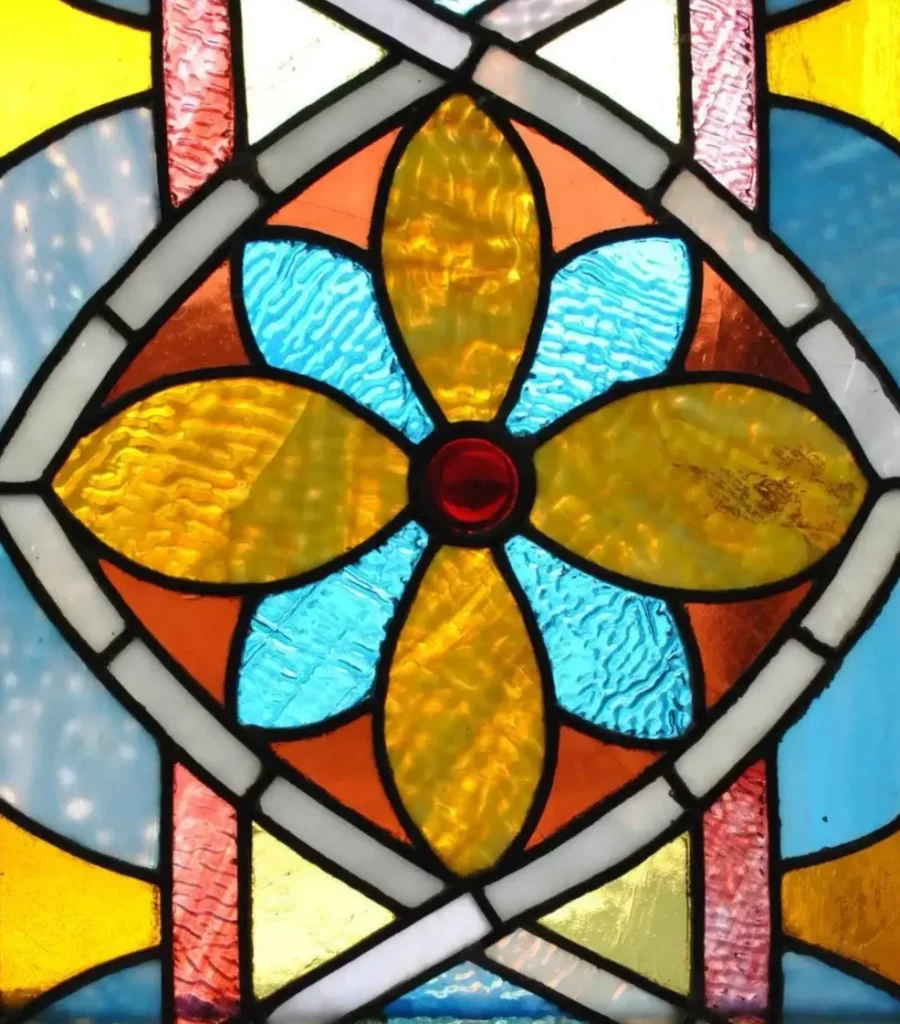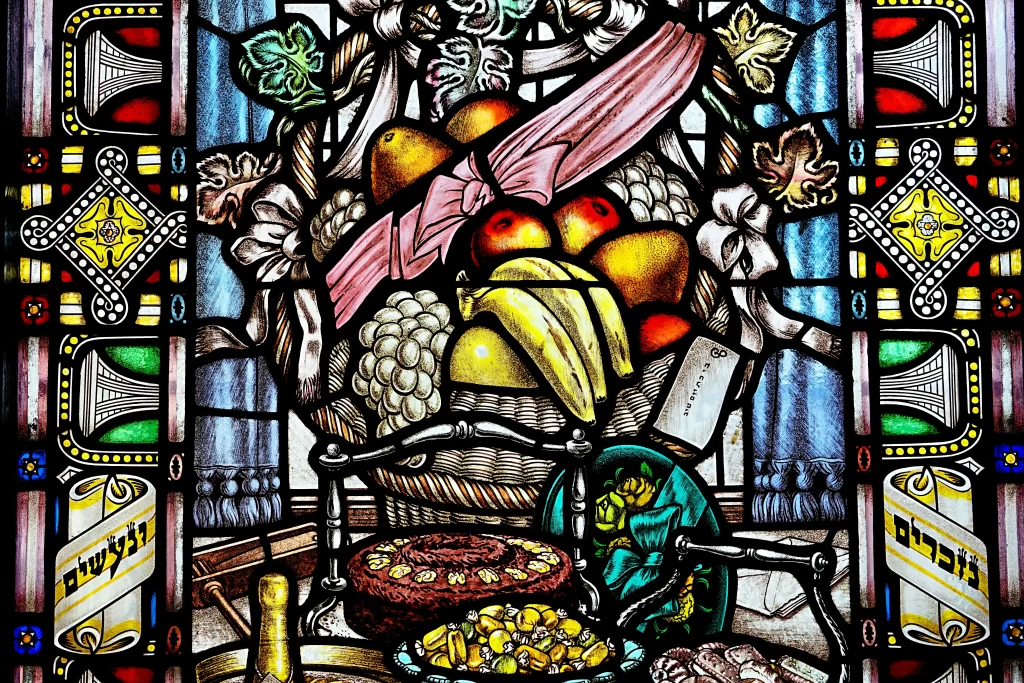Painted & Stained Glass; Leaded Lights
Understanding the Differences
Leaded glass and stained glass are unique forms of glass decoration. And you will often hear the term “Leaded Lights” to mean leaded glass.
“Lead Cames ” securely hold the glass pieces together in leaded glass, whereas stained glass takes it a step further by adding color to the design. The term “stained leaded glass” encompasses both forms of glass art. However, with the rise of environmental concerns and advancements in technology, painted glass has become a popular alternative to traditional stained glass. It offers a similar aesthetic appeal while avoiding the harmful and polluting effects of traditional staining methods.

What is Stained Glass

Stained glass is a captivating form of art that unites glass and color. Artisans first melt glass, then add metallic oxides for a spectrum of hues. Lead Cames secure the colored glass pieces, forming intricate designs. Windows, lamps, and decor often showcase stained glass, enhancing spaces with its beauty and play of light. Stained glass has long been prized for its elegance and graces grand cathedrals, homes, and buildings. In recent years, technology and environmental concerns drive the use of painted glass, a safer alternative to traditional staining methods. Despite this, stained glass endures as a timeless art form, beloved for its unique beauty and versatility.
What is Painted Glass
Stained glass artists often enhance their designs with painted glass by applying pigments or enamels to the surface before integrating it into the window. These pigments fuse with the glass, adding depth, texture, and intricate details, as well as providing shading. By combining painted glass with other types, such as stained or colored glass, artists can greatly elevate the beauty of their final pieces. They create visually stunning works of art.

What is Leaded Glass or Leaded Lights
Leaded Lights and Leaded glass, are the most, synonymous. The term “Leaded lights” once meant lead framework holding glass panes, now synonymous with the decorative glass panels themselves
Leaded glass showcases both strength and beauty. Skilled artisans use thin strips of lead, called “lead cames,” to secure the glass pieces in place and create intricate designs. Often seen in windows, lamps, and decor, leaded glass adds stability and enhances the visual appeal of any space. With roots dating back to medieval Europe, leaded glass has a rich history of gracing grand cathedrals and other magnificent buildings. Despite the passing of time, people continue to appreciate its durability and aesthetic value.

Advancements in building materials led to a decline in the use of leaded glass in the 20th century, but it has recently experienced a revival. The beauty and versatility of leaded glass have once again captured the attention of artists and designers alike, who are rediscovering its timeless appeal.
Quick History Trip
Leaded glass is a craft that has stood the test of time. Originating in medieval Europe, skilled artisans utilized “Lead Cames” to join pieces of stained glass into stunning designs. Windows, doors, and other architectural features in grand cathedrals and buildings showcased leaded glass’s beauty and intricate designs.
As a renowned form of artistic expression, leaded glass became popular over time. However, its use declined in the 20th century with new building materials. But, people are now rediscovering its beauty and versatility, leading to a resurgence in popularity.
In addition, painted glass has emerged as a more environmentally friendly alternative to traditional staining methods, which can be hazardous and polluting. Painted glass offers a safer option for creating stunning works of leaded art.
Uses of Painted and Leaded Glass in Modern Design
As the popularity of painted and leaded glass resurges, architects and designers are finding new ways to incorporate these traditional glass arts into modern spaces. From residential homes to commercial buildings, painted and leaded glass is being used to create unique and eye-catching features.
In residential homes, leaded glass windows and doors add character and charm to any room. The use of painted glass also provides a contemporary twist to traditional designs, offering homeowners a range of options to create a bespoke look. In commercial spaces, painted glass partitions and walls are being used to create private areas while maintaining an open-plan feel.
The use of painted and leaded glass in modern design not only provides a unique aesthetic appeal but also offers practical benefits. Painted glass can provide privacy without compromising on natural light, while leaded glass adds an extra layer of security to windows and doors.
The resurgence of painted and leaded glass also provides opportunities for skilled artisans to showcase their talent and creativity. With advancements in technology, artists and designers can now use 3D modeling and printing to create intricate designs that were once impossible to achieve.
Overall, the use of painted and leaded glass in modern design not only honors the craft’s rich history but also offers a sustainable and visually appealing option for architects, designers, and homeowners alike.



